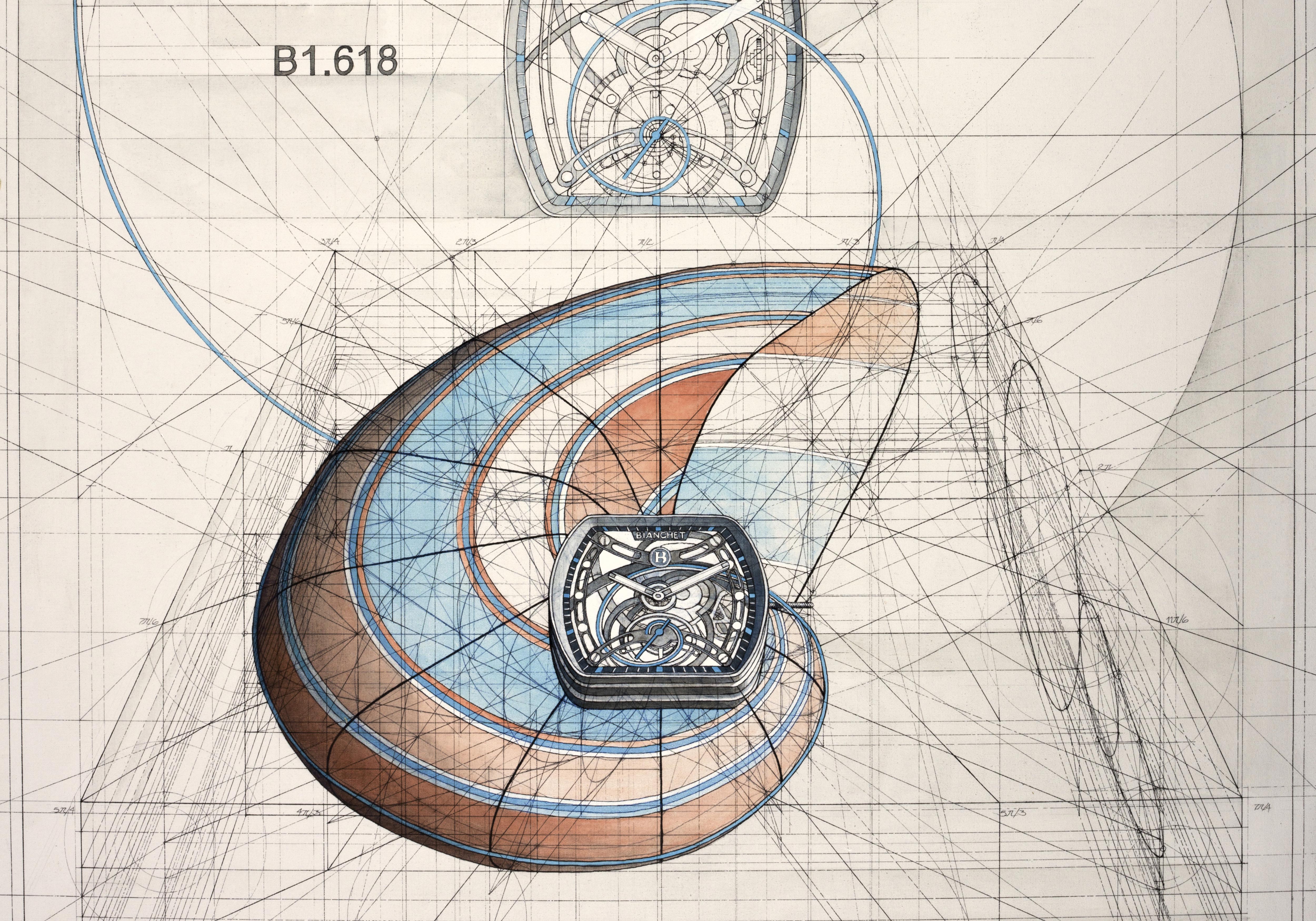The Golden Ratio is a mathematical formula that invariably produces aesthetically pleasing proportions. Most watch brands use it, consciously or otherwise, either across the watch as a whole, or in one or more components. The question, in the end, is not whether the Golden Ratio is used, but why.
Family history
At Bianchet, the answer can perhaps be found in the DNA of Rodolfo and Emmanuelle Festa Bianchet. Rodolfo was born into a family that had been involved in the wool and cashmere business since 1885, before moving into the watch trade. Emmanuelle began her career in the fashion industry, while at the same time feeding her passion for music (she studied classical piano) and painting, both of which she still practises today. The fusion of these passions, combined with a desire to return to the mountains of Switzerland to create beautiful objects, found its natural expression in watchmaking. Emmanuelle designed her first watch, a diver, in 2016.

Not just a pretty face
The first tourbillon designed by Bianchet is unapologetically sporty. Sport – and thus performance – is not always compatible with aesthetic refinement. What’s necessary for strength and durability is not necessarily pleasing to the eye.
The success of this piece lies in its ability to reconcile the beautiful and the strong, what’s easy on the eye with what’s effective on the wrist. The answer to this seemingly impossible conundrum is a number: the Golden Ratio, 1.618. In order to highlight this deliberate fusion of the technical and the aesthetic, “1618” features in the name of this in-house tourbillon, which is called the Tourbillon B1.618 Openwork.

Beyond the case
In the spirit of the work of the mathematician Fibonacci (who identified the Golden Ratio), the Fibonacci spiral defines the entire architecture of the watch. The first curve is found on the case – a symmetrical tonneau shape with a gently curved profile, which hugs the wrist. Is this a new concept? No. But that’s not what makes the Tourbillon B1.618 Openwork so special. You have to look inside the movement.
In order to see, you first have to understand: first, how the Fibonacci series translates into 3-dimensional space, and second, how a mechanical watch works. That’s the only way to comprehend their relationship. The Fibonacci series, when the algebra is converted into geometry, more or less describes the inside of a shell – a cephalopod mollusc called the Nautilus, in fact.
As the shell curls around its own axis, its curves continually expand by the same ratio (1:1.618). So, in a watch, which component unwinds from a central axis? The barrel!

That’s the starting point for the geometry of the Tourbillon B1.618 Openwork. Ground Zero is nestled beneath a toothed wheel fixed on a pinion, called the ratchet. Everything is arranged around this barrel ratchet: not only the curves of its own spring, but the bridges of the entire movement, as if they were a natural extension of the barrel spring.
That is what produces this watch’s unique geometry of overlapping curves, which could only be revealed by an openworked architecture. And that begs a question: what will become of this calibre in the future? If its raison d’être is to be fully visible, will we ever see a B1.618 with a dial? Watch this space… and keep hunting for shells!






